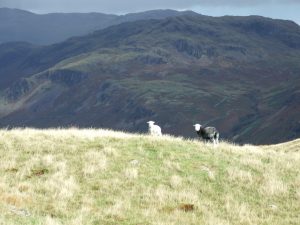Call: +44 (0)17683 71777 | Email
The English Lake District, a UNESCO World Heritage Site
THE ENGLISH LAKE DISTRICT, A UNESCO WORLD HERITAGE SITE
In 2018 our wonderful region was nominated by UNESCO as a World Heritage Site, thus joining such iconic locations as the Taj Mahal, the Great Barrier Reef and the Grand Canyon.

The criteria used by UNESCO for selecting World Heritage Sites are quite specific and focus on their definition of Outstanding Universal Value (OUV). The Lake District submission was under the category of Cultural Landscape. This is defined as representing:
- “the combined works of nature and of man”
- “the evolution of human society and settlement over time, under the influence of the physical constraints and/or opportunities presented by their natural environment and of successive social, economic and cultural forces, both external and internal”.
Less well know is the fact that the Hadrian’s Wall World Heritage Site, designated in 1987, extends from the line of the Wall itself down the Cumbria Coast and includes the charming village of Ravenglass and the surrounding area. Since Ravenglass also lies within the Lake District National Park, this makes Ravenglass unique in the UK in belonging to TWO UNESCO World Heritage Sites!
| You can VISIT Ravenglass on our Heart of Lakeland Tour and STAY there on the Cross Lakes Rambler. |
Why did the Lake District qualify?
The UNESCO wording says it all!…. the continuity of traditional farming and local industry in a spectacular mountain landscape
The unique Lake District farming system is based on rearing the native Herdwick sheep. It has developed for over 1000 years in response to the upland landscape of fells, lakes, valleys and native woodland. The great beauty of the Lake District comes from the combination of stone walled fields and local farm buildings with a compact and spectacular natural landscape. Both the long duration of our farming culture and the survival to the present day of its distinctive character is considered to be of outstanding universal value.
The social side of Lake District farming is also important. It includes:
- the pattern of family farm tenure;
- the ‘hefted’ grazing system which allows communal shepherding without fences and walls on the largest area of common grazing in Europe;
- the survival of local dialect;
- local industries based on the natural resources of the area (wood, rocks and minerals and water power) have also contributed to the unique character of the Lake District World Heritage Site.

A rich cultural landscape
The Picturesque Movement led to changes to the landscape that were designed to improve its beauty. These included villas, formal gardens, tree planting and viewing stations.
The Picturesque movement also influenced the development of Romantic thought, largely through the writings of William Wordsworth and the other Lakes Poets. They produced a new and influential view of the relationship between humans and the landscape.
Wordsworth had a sense of the dependence of individual awareness and sensitivity on landscape. This led him to propose in his Guide to the Lakes of 1810 that the Lake District should be deemed “a sort of national property, in which every man has a right and interest who has an eye to perceive and a heart to enjoy”. This did not happen until the creation of the Lake District National Park, over 140 years later.
| To see where you will be staying if you book one of our linear tours, and to view the full itineraries, please click on About our Tours. |
